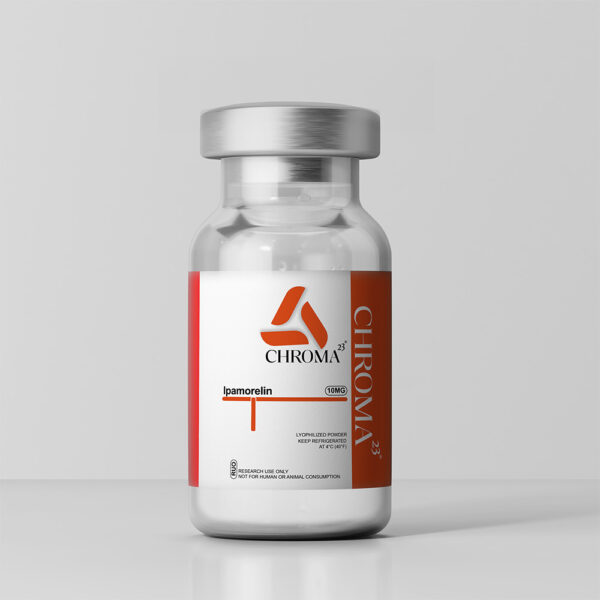PT-141 (Bremelanotide) is a synthetic heptapeptide analog of α-melanocyte-stimulating hormone (α-MSH), developed for the investigation of melanocortin receptor modulation. Structurally derived from the parent peptide Melanotan II, PT-141 exhibits selective agonist activity at melanocortin-3 and melanocortin-4 receptors (MC3R and MC4R), making it a valuable tool in neuroendocrine research.
In research contexts, PT-141 is primarily used to explore how melanocortin receptors influence behaviors and autonomic responses. Unlike other α-MSH analogs, PT-141 does not bind with high affinity to melanocortin-1 receptors (MC1R), the primary receptors responsible for pigmentation, which makes it especially useful for studies seeking to avoid off-target melanin-related pathways.
Investigations have demonstrated that PT-141 exerts its effects through central nervous system (CNS) modulation, primarily involving hypothalamic and limbic system pathways. These studies have evaluated PT-141 in animal models to understand its impact on appetite control, hormonal signaling, and behavioral conditioning. This peptide has also been explored for its interactions with dopamine and oxytocin pathways, contributing to research on neurochemical signaling.
Researchers have also examined PT-141 in models of stress, reward, and metabolic regulation, further supporting its use in behavioral and physiological studies. Its role in these systems is particularly relevant when studying hormonal interactions, stress-induced behavior, and autonomic function in preclinical trials.
The 20mg PT-141 product offered here is prepared using stringent purification processes to ensure consistency, purity, and bioactivity. It is shipped lyophilized and sealed to preserve stability and is reconstitutable in appropriate laboratory solvents for immediate use in controlled study environments.
Note: This product is intended strictly for laboratory research purposes. It is not intended for use in humans or animals.
Product Data:
- Chemical Name: Bremelanotide (PT-141)
- CAS Number: 189691-06-3
- Molecular Formula: C50H68N14O10
- Molecular Weight: 1025.2 g/mol
- Sequence: Ac-Nle-c[Asp-His-D-Phe-Arg-Trp-Lys]-OH
- PubChem CID: 9941529





